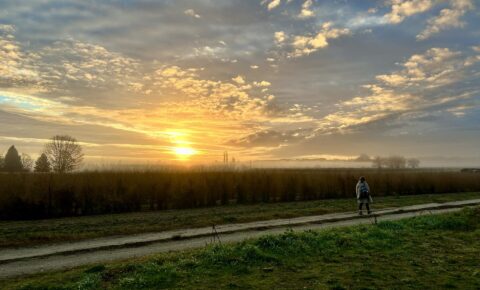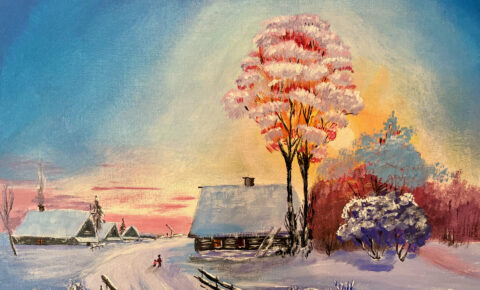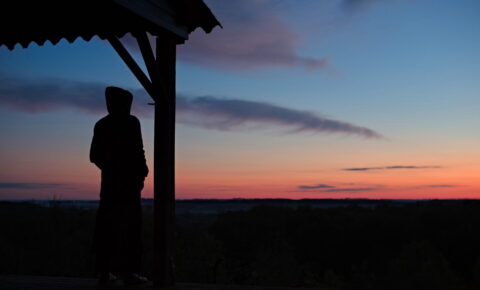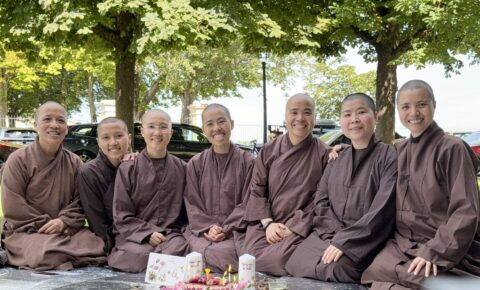In this excerpt from Healing Our Way Home, Lay Dharma teacher Marisela Gomez shares insights about the tension between connectedness and aloneness and the meaning of true refuge.
Spiritual friendship is not half the spiritual life. It’s the entire spiritual life.
Shakyamuni Buddha, Upaddha Sutta SN 45.2
Rethinking Relationships and Place
During the isolation of the pandemic, which, here in the US, dug its heels in at the beginning of March 2020, we were in an intentional way starting to rethink our relationships with others just because of the fact that we were not able to be around our networks—and our places, too, right? We define ourselves by how a place reflects back to us ourselves, how we are in that place, the idea that we “self” into different beings—show up differently—in each different situation. So, I think place helps to shape us and shape who we are in general and who we are in different situations. When I’m in nature, by water, hearing birdsong and seeing green and flowers, I self into another Marisela—if I’m here to receive it. When I’m in the city or in a more densely populated area and I’m walking by unhoused people and it’s hot and it’s a minute before I see a tree, there’s something else that stirs and arises in me and there’s something else I receive too, right? I think place and the people who are in those places really define us.
Self-Isolation and Healing in Nature
During the pandemic, I had to quarantine and was blessed that my place then was near nature. Becoming ill myself, and navigating how we understand ourselves in relationship to others when we are away from them—that is normal. This has been really interesting for me because when I got sick, I self-isolated because I like being alone and it’s my go-to for healing. It’s my go-to when I’m not sick and it certainly becomes my go-to when I’m sick. Being in nature makes me feel even more isolated (from others) because I then find myself reconnecting with nature in such a deep way that I don’t need anything else. The conversation with the flower and the bird becomes a little more real, deeper. The water starts to really become me. I reconnect with nature. However, when I had to start taking these very high doses of steroids that threw me out of my sense of who I am and agitated me, my baseline was not calm anymore. My mind and body were agitated.
Losing Control: Agitation and Disconnection
There was a lack of focus and an easy rolling off into subliminal spaces that really challenged me. I had never before felt unable to define where my mind state was going to be in any one moment in time. It was a relationship, though, that brought me back. A good friend noticed I was writing some incomprehensible things on email. Then I lost my phone. I didn’t get one again for a month. She really pulled me back in, you know. It was a “Come to Jesus moment.” She said, “Oh, you’re not Marisela, you’re acting in a dissociated way right now. It’s not normal. It doesn’t make any sense to be ill, to be isolated and to not have a way to engage with people if you need them.
The Role of Relationships in Reconnection
In those moments I hadn’t thought of that. That didn’t even cross my mind. I was in my world and dealing with nature. My reality shifted and it was a relationship with another human being that knocked on the door and said, “Here’s why this is not normal. This is why we are in relationship with people.”
The Buddhist teachings remind us that spiritual friends are not just a part of the path of awakening, they are the whole path of awakening. Once I was woken up into understanding the need for communication and friends again, she said she was going to call me on Skype every day to make sure I got a phone. I needed this relationship to remember what I had to do in those moments. When I shared this with another friend, she too started gently “getting on me” about the phone. My network, my relationships, were re-manifesting around my illness and its sidekicks—the side effects (altered states of mind)—which were the suffering that led me back to reconnection.
The Fine Line Between Refuge and Isolation
Valerie shared earlier that we as Black people live in a certain space in our minds and our hearts due to racialized trauma and the way it intersects with other forms of oppression. I know people who have isolated and taken refuge in self as the Buddha instructed: “Don’t look to me nor to any of the great disciples but look to yourself for refuge.” This is a deep teaching for those of us on this path.
There’s a way that marginalized and traumatized people have also taken great refuge in self. I know I have. This teaching can also be a slippery slope, though. Because what I’ve discovered in the last four months is that between this need for self-isolation, this feeling of safety only when alone, and taking refuge and rediscovering this true self, there is a fine line—between truly taking refuge and falling into isolation. It can become non-reality based. So much so that it’s not a true refuge anymore. It’s a false refuge. I think that’s the dance, the flow, the wave that really helps us stay connected: to stay in relationship with energies that are also in this time and space because we are in this time and space.
Trying to fly off with the birds and the waves into that other time and space is nice but not quite safe at times. And I say “safe” in many ways on a spectrum. My own journey these last months has been to understand my own thinking around what feels safe and when I feel safe. I have come to realize that I often feel safe when I’m alone. It’s when I breathe, feel my body and all of me; when I feel pleasure, I feel joy, am present, I feel connected again to the earth, that’s when I feel safe. And then I’m home.
I am in the process of rethinking, asking where and when this tendency might take me away from relationships of care, which are another type of wonderful reality. Is this dedication to being alone another upādāna—attachment, grasping, clinging. This is an important understanding in Buddhist teachings.
Clinging vs. Enjoying: The Role of Attachment
Understanding clinging helps us to differentiate between enjoying something that brings us contentment, joy, while not becoming so attached that it is unhealthy or even becomes an addiction. In that space of addiction, we cannot clearly see all that is there. Does there really need to be a separation from people to be safe? Perhaps for some of us, yes—for some periods. The fine line is how to make sure we do not stay there and move to isolation. I am revisiting the happiness, the joy, and the love of human relationship and connection.
I explored these questions and the possibilities in 2020 when I was in this fog of these steroids; there was this veil over my mind. But it was also a fog that allowed me to dip into another consciousness.
I was thinking about how to see this period of taking a mind-altering medication as an opportunity to help me identify some things that might not be easily accessible, while not being swept away by grasping.
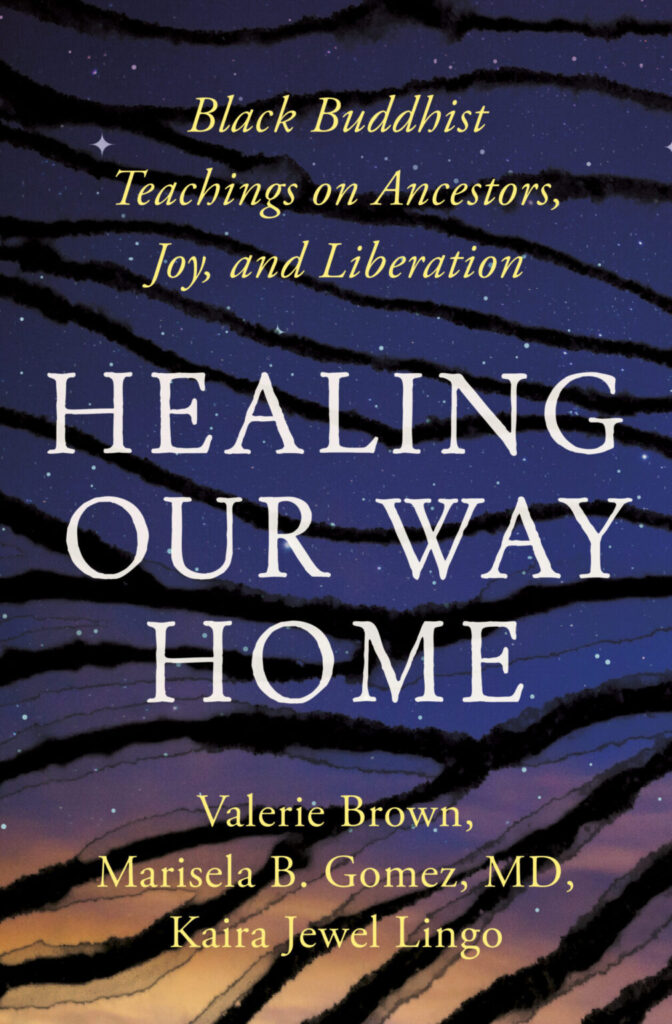
In Healing Our Way Home, join three friends, three Black women, all teachers in the Plum Village tradition founded by Zen Master Thích Nhất Hạnh, in intimate conversation, touching on the pain and beauty of their families of origin, relationships and loneliness, intimacy and sexuality, politics, popular culture, race, self-care and healing.
Available on Parallax Press now.


